Renault 4 E-Tech Electric
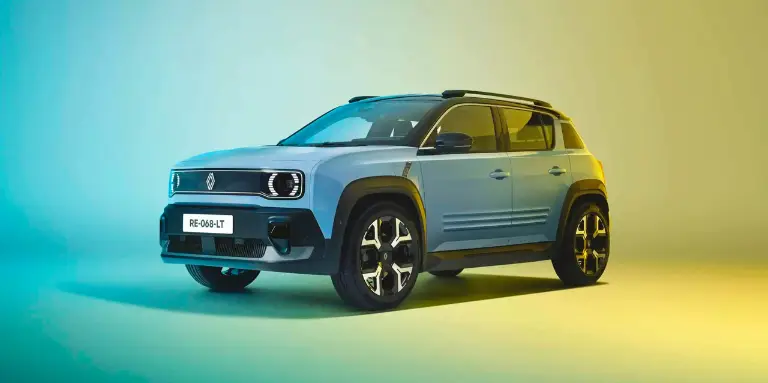
A modernised icon, the Renault 4 E-Tech Electric is set to be one of the most eagerly awaited launches of late 2025. Inspired by the legendary Renault 4L, this 100% electric version combines nostalgic heritage and cutting-edge technology to appeal to both private customers and urban fleets. It symbolises Renault's ambition to make zero-emission mobility accessible, while offering a resolutely attractive design.
Key points to remember:
- Neo-retro design A new look: lines inspired by the historic model, revisited with a modern lighting signature and compact proportions ideal for the city.
- E-Tech technology 100% electric motor with autonomy estimated at around 400 km WLTP, versatile enough for urban and suburban use.
- Fast recharge compatible with DC charging, recovering approximately 80% of battery in less than 30 minutes.
- Versatility A dedicated electric platform for optimised interior space, with a range of vehicles suited to both families and professionals.
- Strategic positioning designed to compete with models such as the Citroën ë-C3 or the future VW ID.2, by offering attractive value for money.
This Renault 4 E-Tech Electric looks set to be a flagship model, capable of marking a turning point in the compact electric car segment in Europe.
DS 8 electric
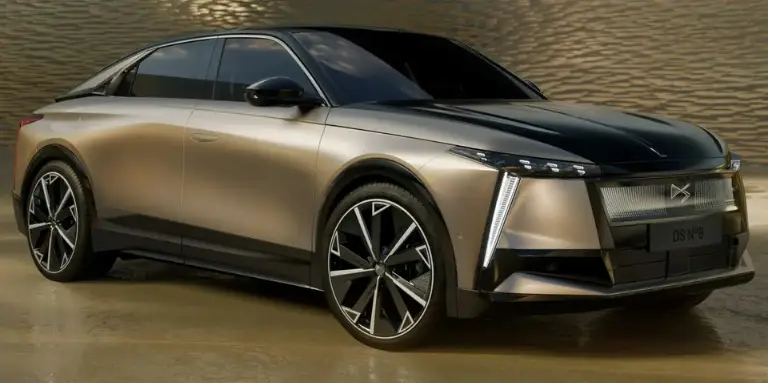
The electric DS 8 is set to be one of the flagship models of late 2025. Positioned in the premium segment of French saloons, it combines elegance, comfort and an electric 100% engine designed to rival the German benchmarks in the market. With this launch, DS Automobiles is confirming its commitment to accelerating electrification while retaining its French luxury DNA.
- The range is claimed to be around 650 km WLTP, so long journeys can be envisaged without compromise.
- Innovative platform offering ultra-fast charging (up to 80% in less than 25 minutes).
- Refined design inspired by DS concept cars: distinctive light signature and top-of-the-range finishes.
- Advanced on-board technologies, including an augmented reality head-up display for enhanced safety and driving comfort.
- The latest-generation semi-autonomous driving system, designed to reinforce the DS 8's position as the brand's technological showcase.
With this model, DS aims to appeal to demanding motorists looking for a combination of performance, innovation and premium identity. By focusing on electric power, the DS 8 could become one of the essential choices for those who want to combine sustainable mobility with a high level of prestige.
Citroën C5 Aircross electric

Eagerly awaited for the end of 2025, the electric Citroën C5 Aircross marks a key stage in the French manufacturer's electrification strategy. A flagship model in the family SUV segment, it promises to be a serious alternative to current benchmarks thanks to its positioning focused on comfort and range.
Here are some of the key points to bear in mind:
- Dedicated platform The SUV will be based on the Stellantis Group's latest-generation electric platform, optimised to accommodate large batteries without compromising interior space.
- Target autonomy A battery of around 75 kWh is expected, with an estimated range of between 450 and 500 km in the WLTP cycle, putting the model in the upper mid-range of the segment.
- Citroën comfort The brand is retaining its suspension with progressive hydraulic bumpers and is banking on a spacious cabin, true to the 'comfort suspension' DNA that has made its reputation.
- On-board technologies digital instrument panel, new connected infotainment system and Level 2 driving aids, including adaptive cruise control and lane keeping assistant.
- Fast recharge : compatibility with ultra-fast charging up to 150 kW, enabling 80% to be recovered from the battery in around 30 minutes.
The electric Citroën C5 Aircross aims to appeal to families and fleet managers looking for a comfortable, modern SUV that is eligible for the tax benefits associated with electric 100% vehicles.
Nissan Leaf (3rd generation)
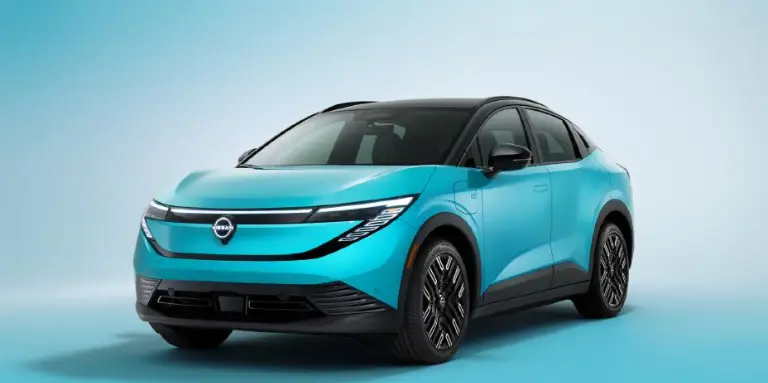
The third-generation Nissan Leaf is set to be one of the major electric vehicles of late 2025. A pioneering model in zero-emission mobility since 2010, the Japanese compact car aims to maintain its benchmark status while meeting new market expectations in terms of range, connectivity and design.
Expected developments include
- New CMF-EV platform A common base with the Ariya, which promises improved roadholding and optimised interior space.
- More powerful battery with a claimed capacity of between 60 and 85 kWh to exceed 500 km of WLTP range.
- Improved rapid recharge compatible with 150 kW charging points for shorter stops on long journeys.
- Modernised style lines inspired by the Ariya crossover, with a more dynamic silhouette and aerodynamics.
- On-board technologies ProPILOT Assist, augmented reality on the head-up display and OTA software updates.
With these improvements, the Nissan Leaf (3rd generation) aims to strengthen its appeal in the highly competitive electric compact segment, in the face of European and Chinese manufacturers, who are becoming increasingly present. This model will be particularly eagerly awaited by private customers looking for a versatile, affordable electric family car with a good balance between price, technology and range.
BMW iX3

The BMW iX3 is one of the most eagerly awaited electric SUVs of late 2025. Positioned in the premium segment, it combines the elegance characteristic of the Bavarian brand with a technological upgrade aimed at both families and professionals looking for sustainable mobility. The new version promises enhanced range and new functions, designed to rival the market benchmarks.
Key developments include
- A new, high-capacity battery, enabling the car to break the 500 km WLTP range barrier.
- Ultra-fast DC charging (up to 210 kW), significantly reducing downtime.
- Optimised design with reworked aerodynamics and a closed grille emblematic of BMW i models.
- Latest-generation in-car technologies, including an updated infotainment system and advanced driver assistance.
- Dynamic driving true to BMW DNA, with increased power and precise handling.
The BMW iX3 2025 illustrates the manufacturer's desire to expand its electric range by strengthening its benchmark SUV. With these new models, BMW is positioning itself as an attractive alternative to its European and Asian competitors, while at the same time meeting the expectations of demanding customers in terms of innovation and comfort.
Make your energy transition now, with a range of new 100 % electric vehicles available for leasing from Beev!
Jaguar Type 00
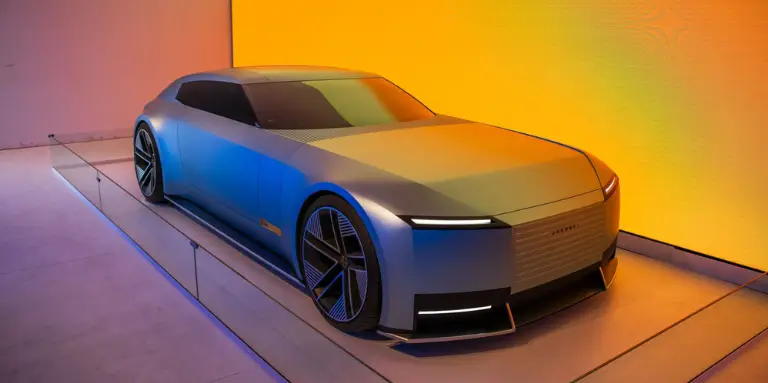
The Jaguar Type 00 is set to be one of the British carmaker's most ambitious electric models, symbolising a move towards the 100% electric range expected by the end of 2025. With its futuristic design and cutting-edge technologies, this vehicle aims to compete directly with the large premium saloons already on the market. Jaguar is focusing on performance and driving experience, while asserting a refined identity typical of the brand.
- New-generation battery Range: estimated at over 650 km thanks to optimised architecture and intelligent energy management.
- Ultra-fast recharging 300 km of range in less than 15 minutes on a high-power terminal.
- Sports performance 0 to 100 kph in less than 4 seconds, a direct legacy of Jaguar's sporting expertise.
- Top-of-the-range interior These include an immersive digital cockpit, durable upholstery and an integrated augmented reality display (AR-HUD).
- Advanced connectivity seamless integration with mobility services and OTA (Over-The-Air) software updates.
Positioned as Jaguar's technological showcase, the Type 00 perfectly illustrates the brand's desire to offer a premium electric alternative that combines performance, elegance and innovation. Its eagerly-awaited launch is set to strengthen the British manufacturer's position in the market. Tesla Model S and Mercedes EQS in the large luxury road car segment.
Polestar 5

The Polestar 5 is one of the most eagerly-awaited electric launches for late 2025, symbolising the Swedish brand's ambition to compete directly with Tesla electric and Electric Porsche in the premium saloon segment. Inspired by the Precept concept, it marks a stylistic and technological breakthrough in the Polestar range.
- Design and aerodynamics A sleek silhouette, taut lines and grand touring proportions, designed to maximise fuel efficiency at high speeds.
- Performance claims Thanks to an 800-volt architecture and a dual motor, the Polestar 5 should exceed 600 bhp, guaranteeing both responsiveness and greater range.
- Battery and recharging with an estimated capacity of around 100 kWh, offering more than 600 km of WLTP range, with ultra-fast recharging enabling 80% of battery to be regenerated in less than 30 minutes.
- On-board technologies including advanced integration of Google Android Automotive OS, an enhanced head-up display and the latest generation of driving aids.
The Polestar 5 is more than just an electric saloon: it illustrates the brand's determination to establish a premium, sustainable and performance-oriented identity, reinforcing its appeal in the rapidly expanding European market.
Renault Twingo electric (new generation)

Renault is preparing the comeback of its cult city car with an electric 100% version of Twingo, scheduled for the end of 2025. Positioned in the affordable small city car segment, this new generation is designed to be compact, economical and perfectly suited to urban mobility. The manufacturer's objective is clear: to offer an affordable electric alternative to democratise electromobility in Europe.
Key points expected :
- Range optimised for urban use, estimated at between 250 and 300 km according to initial internal feedback.
- Attractive price: Renault is aiming to make this one of the most affordable electric cars on the market, at under €25,000 excluding the environmental bonus.
- Fast charge compatible with DC terminals, allowing you to recover almost 80% from the battery in less than 30 minutes.
- Modern design inspired by Twingo's DNA, with a streamlined yet connected interior featuring the latest multimedia and navigation technologies.
- Made in Europe, a guarantee of competitiveness and proximity to the European market.
With this model, Renault aims to reinforce its leadership in the compact electric segment, already marked by the success of the Zoé and then the Mégane E-Tech. The electric Twingo could become the new benchmark for zero-emission city cars.
For individuals and businesses
Škoda Epiq

Expected to be one of the brand's strategic models, the Škoda Epiq symbolises the Czech manufacturer's desire to expand its electric range by the end of 2025. This compact SUV, with its modern, robust design, is positioned as a more affordable alternative to the Skoda EnyaqThe company is targeting a public looking for versatility and energy efficiency.
Highlights include
- Estimated range of around 400-450 km, ideal for daily commutes and long weekends.
- The Volkswagen Group's MEB platform, guaranteeing optimised architecture and proven technology.
- Fast recharge time thanks to compatibility with high-power charging stations (up to 125 kW).
- Attractive price positioning, advertised as lower than family models, to appeal to a wide audience.
- Connected equipment and driver assistance, incorporating the latest innovations in safety and comfort.
With the Epiq, Škoda aims to further democratise electric mobility by offering a practical, technological SUV that is suited to both urban and extra-urban needs.
Toyota Urban Cruiser EV
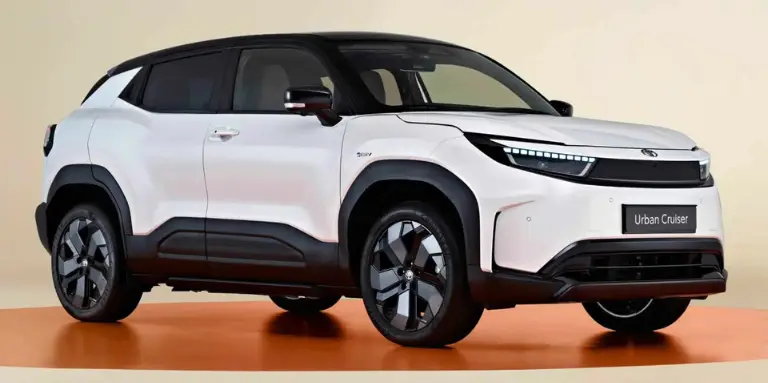
Expected by the end of 2025, the Toyota Urban Cruiser EV promises to be a cornerstone of the Japanese manufacturer's electric strategy. Positioned in the highly competitive compact urban SUV segment, this model aims to combine Toyota's expertise with a real step-up in power on the electric 100%. Aimed primarily at the European and Indian markets, it offers an affordable alternative for city dwellers wishing to go electric without sacrificing range or interior space.
Among the main elements expected:
- A new-generation battery of around 50 kWh offering an estimated range of over 400 km (WLTP cycle).
- A competitive price that would be positioned below the Toyota bZ4Xto appeal to a wider audience.
- A compact, modern design, conceived for city centres, but with sufficient ground clearance to meet the typical expectations of the SUV segment.
- Enhanced on-board connectivity (Toyota Smart Connect, Android Auto / Apple CarPlay compatible) and advanced driving aids via Toyota Safety Sense.
- Production and initial launch in India, with progressive marketing planned in Europe by the end of 2025.
With this model, Toyota is responding to growing demand from drivers looking for a practical and competitive urban electric car. The Urban Cruiser EV is expected to raise the brand's profile in the compact electric vehicle market, a key segment in full expansion.
Summary of the top 10 new electric cars expected by the end of 2025
| Model | Segment | Estimated range (WLTP) | Estimated price (€) |
|---|---|---|---|
| Renault 4 E-Tech Electric | Compact city car | ~308-400 km (depending on version) | From €25,990 (excluding bonuses) |
| DS 8 electric | Premium saloon | 550-750 km | 59 200 € à 74 600 € |
| Citroën C5 Aircross electric | Family SUV | 520 km | From €40,290 |
| Nissan Leaf (3rd generation) | Compact family | 600+ km (~604 km WLTP) | ~30 000 € |
| BMW iX3 (new generation) | Premium SUV | 800+ km (up to 805 km) | From €71,950 |
| Jaguar Type 00 | Luxury sports saloon | 770 km | 120 000-150 000 € |
| Polestar 5 | Top-of-the-range GT saloon | 565-670 km | From €119,900 |
| Renault Twingo electric | City dweller | 250-300 km | < 25 000 € |
| Škoda Epiq | Compact SUV | 400-450 km | ~30 000 € |
| Toyota Urban Cruiser EV | Compact urban SUV | 400+ km | ~28 000 € |
Conclusion
Ultimately, the end of 2025 will mark a decisive stage for electromobility in Europe, with an increasingly diverse range of vehicles to suit every type of motorist. From affordable city cars like the new Renault Twingo or the Toyota Urban Cruiser EV, to premium saloons such as the DS 8, the Polestar 5 or the Jaguar Type 00, the market is moving towards a balance between performance, range and accessibility.
The compact family SUVs, represented by the Citroën C5 Aircross, the BMW iX3 and the Škoda Epiq, confirm the popularity of this segment with families and professionals alike. This top 10 is a perfect illustration of the rapid transition in the automotive sector, where comfort, technological innovation and respect for the environment are becoming the watchwords of tomorrow's mobility.
You would like toto electric?
Beev offers multi-brand 100% electric vehicles at the best prices, as well as recharging solutions.
































